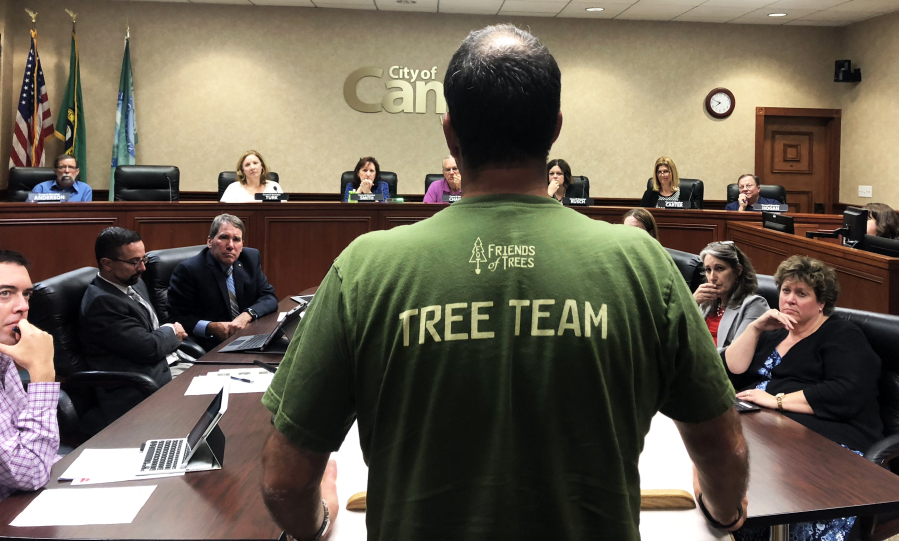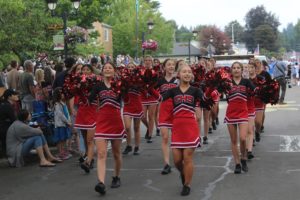Emotions ran high at the Camas City Council meeting Monday night, as dozens of Camas residents turned out to decry the “clearcutting” of old-growth urban trees and insist Camas leaders work harder to protect the city’s tree canopy.
“Every single subdivision I’ve seen in the past five years has been clearcut,” Camas resident Geri Rubano said Monday. “It’s devastating and I can’t stand it anymore. … These trees have been here longer than we have and they deserve to live.”
The tree advocates had come to the city council meeting to weigh in on the city’s proposed Urban Tree Program, which would help protect the tree canopy in new Camas developments, but do little to save trees on parcels of land already approved for development or trees located outside street-facing planter strips on residential lots smaller than 24,000 square feet.
“There is room to grow from here,” Camas Senior Planner Sarah Fox, the city staff member who took the lead creating the draft Urban Tree Program, said Tuesday. “We were pretty clear that we weren’t planning to protect trees on individual lots, but on new developments. We were putting in place a good starting point, and I’m hoping they took that away with them last night.”
Preserving Camas’ urban trees is something city staff have been working on for the past two years.


